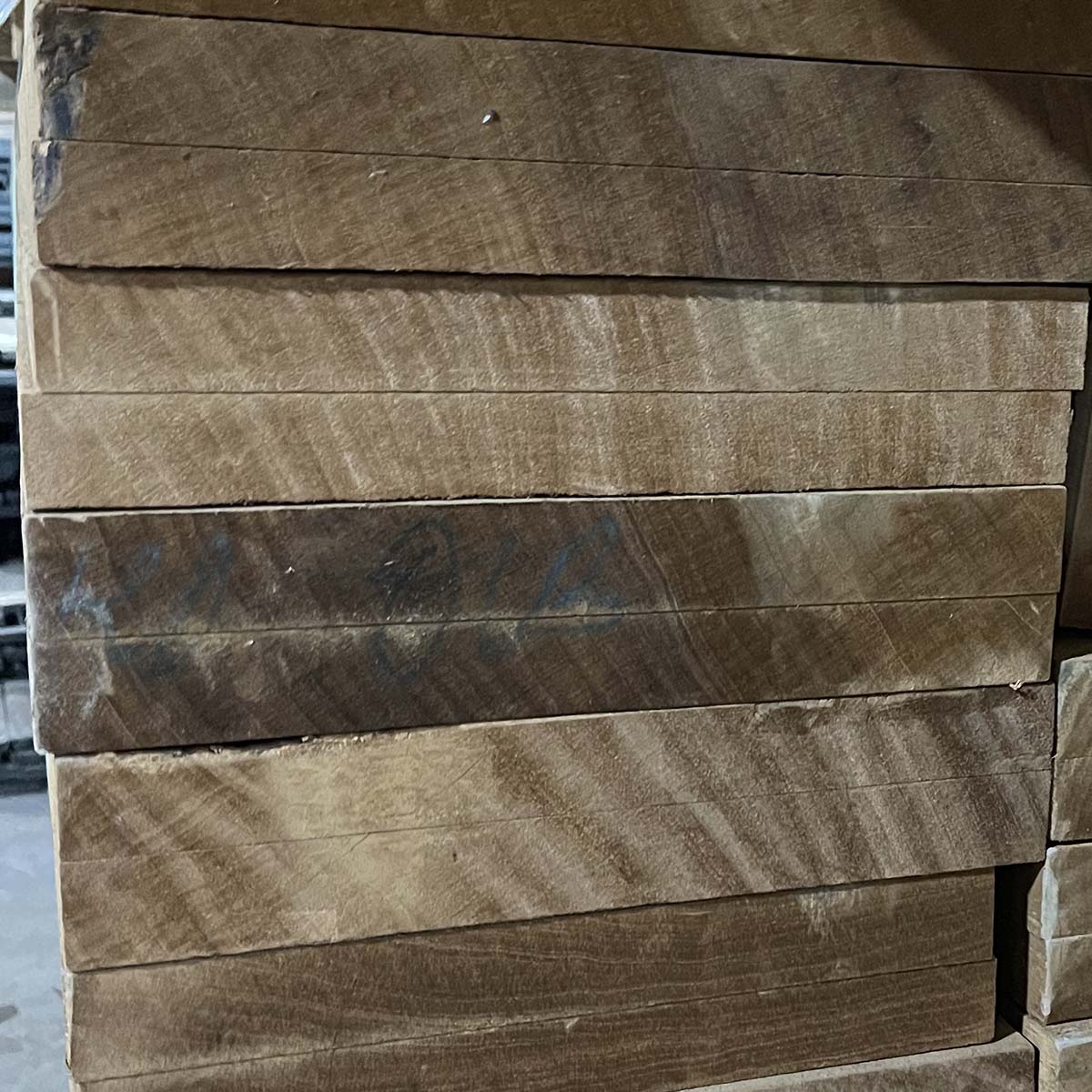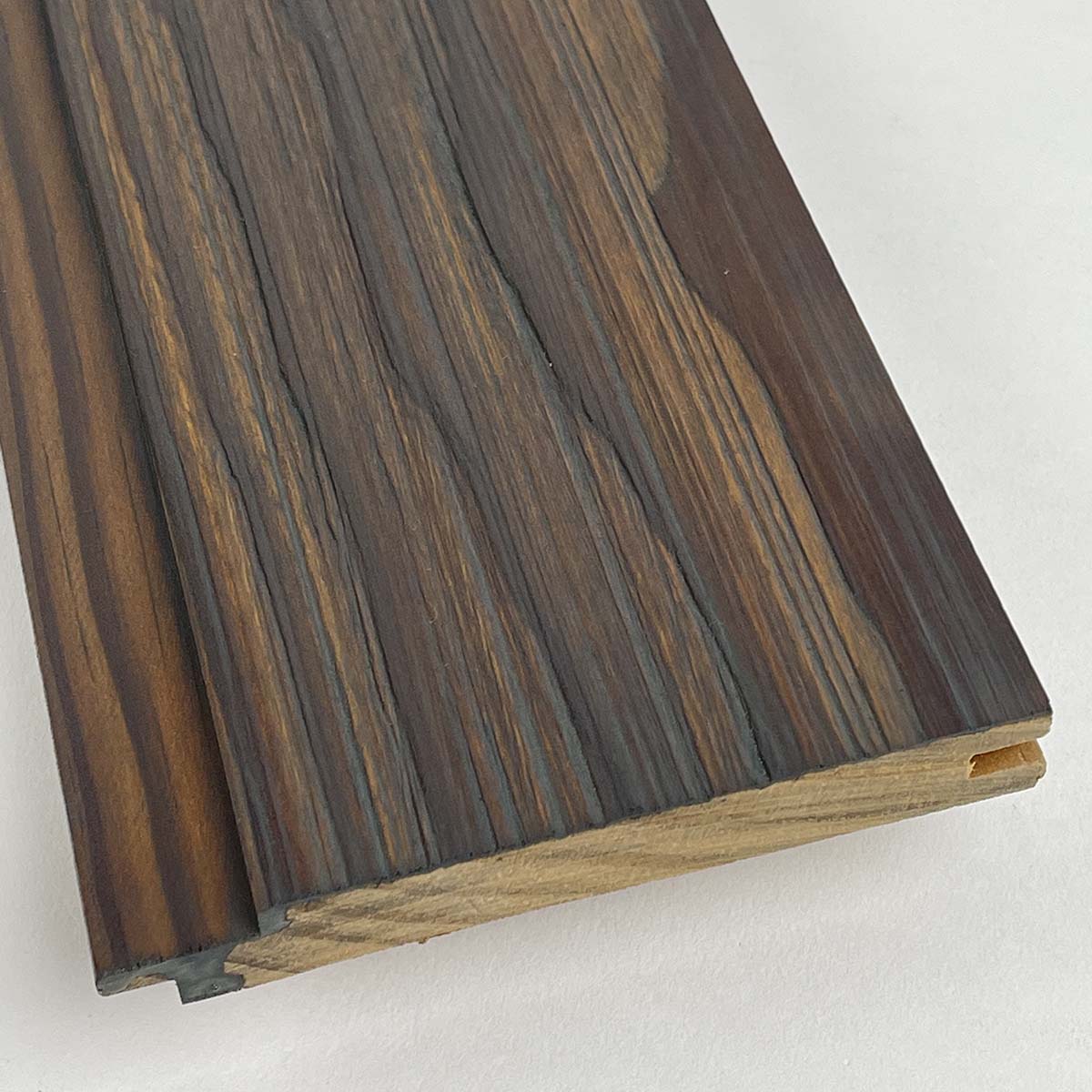Top Exterior Wood Cladding Choices
By
Steve Getsiv,
11/02/23
Wooden Wonders: A Guide to the Top Exterior Wood Cladding Choices
Exterior cladding serves a dual purpose: it protects buildings while also enhancing their aesthetic appeal. Among the most coveted materials for this type of application is wood, which is renowned for its natural beauty and versatility. However, not all wood types are equal, and selecting the right type for exterior cladding is crucial to ensure longevity and durability.
This article will consider the offerings from Nova, and will highlight their unique qualities and why they stand out as the optimal choice for wood siding on your home.

Exterior Cladding - What is it?
- Exterior cladding is a type of skin or an extra layer on the outside of a building:
- It serves multiple crucial roles in improving a building's performance and aesthetics.
- From a structural perspective, exterior cladding is used to protect the building from the effects of weather elements such as rain, wind, and sunlight.
- It creates a controlled environment inside the building and prevents the structural integrity of the building from being compromised.
- Aesthetically, exterior cladding significantly enhances the building's appearance, and provides architects and homeowners the opportunity to personalize the building's look.
Wood as a Premium Exterior Cladding
Wood is a beautiful and durable cladding product that is found on many homes of distinction around the globe. However, not all wood species perform the same when used on the exterior of your home.
Challenges with Wood as Cladding
While wood offers unrivaled beauty and a touch of authenticity as a cladding material, it does come with its fair share of challenges. Certain species of wood may lack the necessary durability to withstand harsh weather conditions, which can lead to a short-lived lifespan if used for external cladding. It can split, crack, or warp over time due to continuous exposure to the elements, and require continuous maintenance needs.
Here are some species that, without proper treatment or maintenance, might be less durable for exterior siding:
Pine
Widely used in construction due to its affordability and availability, untreated pine is susceptible to decay and insect infestation, especially in humid environments (However, thermally-modified Pine products work extremely well).
Spruce
Similar to pine, spruce can be less resistant to decay. It's often used for interior applications, rather than exterior.
Douglas Fir
Although Douglas Fir can be harder than Pine or Spruce, untreated Douglas Fir can still be prone to moisture damage.
These types of challenges don't mean that wood should be discounted as a cladding option. Instead, they highlight the importance of selecting the correct wood species for the job. This is where Nova's range of exotic woods comes into the picture. They are engineered by nature to overcome these challenges and offer the most naturally durable wood for exterior cladding.
Western Red Cedar
Cedar is a naturally durable softwood species of wood which is grown in the Western U.S. and Canada. Clear, All Heart Cedar is one of the most sought-after materials for wood siding since it is both lightweight and durable. This extremely high grade of Cedar is also super expensive running from $10 to $20 per square foot of coverage. Ouch! Yes, there are lower grades available but they often contain sapwood which is not durable and knots which will telescope through even the paint jobs eventually.
Introduction to Nova Wood Species
Nova has a wide range of wood species that are perfect for exterior cladding. Each is uniquely suited to meet the challenges posed by varying climatic conditions, and they are all selected to provide excellent durability, aesthetics, and performance. The following are some of Nova's noteworthy species of exotic wood:
Batu, Red Balau

Batu, also known as Red Balau, is a versatile and dense hardwood that is often selected for its durability and beautiful rich red hue. Batu is extremely dense and naturally resistant to rot and decay, which makes it an ideal choice for exterior cladding applications.
Ipe

Ipe is renowned for its exceptional durability and strength. This Brazilian hardwood is naturally resistant to rot, decay, and insect infestation, so it is an excellent choice for exterior cladding. In addition, its stunning rich brown color gives it an appealing aesthetic that enhances a building's exterior.
Cumaru, Brazilian Teak

Cumaru, also known as Brazilian Teak, is another durable hardwood from Brazil. Known for its inherent strength and high density, Cumaru cladding is naturally resistant to rot and insect infestation, similar to Ipe. It showcases a beautiful range of golden tan to reddish-brown hues, that can add an exotic touch to any home's exterior.
Bangkirai, Yellow Balau

Bangkirai, often referred to as Yellow Balau, is another top-quality hardwood that originates from Southeast Asia. Renowned for its incredible durability and resistance to decay and pests, Bangkirai is a widely used wood species for exterior cladding. Its natural yellow-to-brown coloration adds a warm, inviting appeal to the exterior of any building.
If maintained properly, it can provide an excellent long-lasting finish, which makes it a truly valuable addition to Nova's range of best wood for exterior cladding.
Going BEYOND Exotic & Tropical Hardwoods - Thermally Modified Woods
West African Cedar, Ayous - Lightweight, Naturally Durable - Better than Western Red Cedar?

One of Nova's newest offerings, West African Cedar, aka Ayous or Obeche, truly stands apart. A lightweight and naturally durable hardwood, thermally modified West African Cedar is the most stable species of wood we have ever seen!! Just ask Ron Sauer at Excelsior Wood in Kingston, NY - Ron thinks Ayous is the most revolutionary wood product he has ever seen. Visit Excelsior Wood Products

Rhino Wood, South African Pine - Thermally Modified

Rhino Wood, a type of South African Pine, undergoes a unique "Dual Thermal" modification process that greatly enhances its performance for exterior cladding. After a standard dose of thermal modification to alter the wood's structure, Rhino Wood is wax infused. This dual modification process makes Rhino Wood highly resistant to decay, insects, and improves its stability, strength and hardness. Rhino Wood acquires an attractive dark brown hue through thermal modification. As shown above, Rhino Wood with ExoShield Antique Bronze wood stain.
With Rhino Wood, you can bring the rustic charm of natural wood to your home's exterior while enjoying the longevity and low maintenance of modern engineered materials.
Don't Settle for Less, Choose Nova High-Quality Wood Cladding Options Today
Choosing the perfect wood species for your home's exterior cladding can have a profound impact on its durability, visual appeal, and upkeep. At Nova Wood, we proudly present a wide selection of exotic hardwood and thermally modified species, each with distinctive qualities that make them an exceptional option for exterior cladding. We also carry many other premium hardwood boards to help you complete your project in style.
From the rich warmth of mahogany to the elegant grain patterns of teak, our collection offers an array of choices to suit your unique preferences and enhance the beauty of your home.
Contact us today to find out more!
By
Steve Getsiv,
11/02/23
Comments?
Display Name:
Contact Email:
please be respectful of others' opinions and do not use profanity.
comments may be edited for objectionable content.
Email addresses are not publicly posted, and are used to follow up directly with your comment as needed.




















